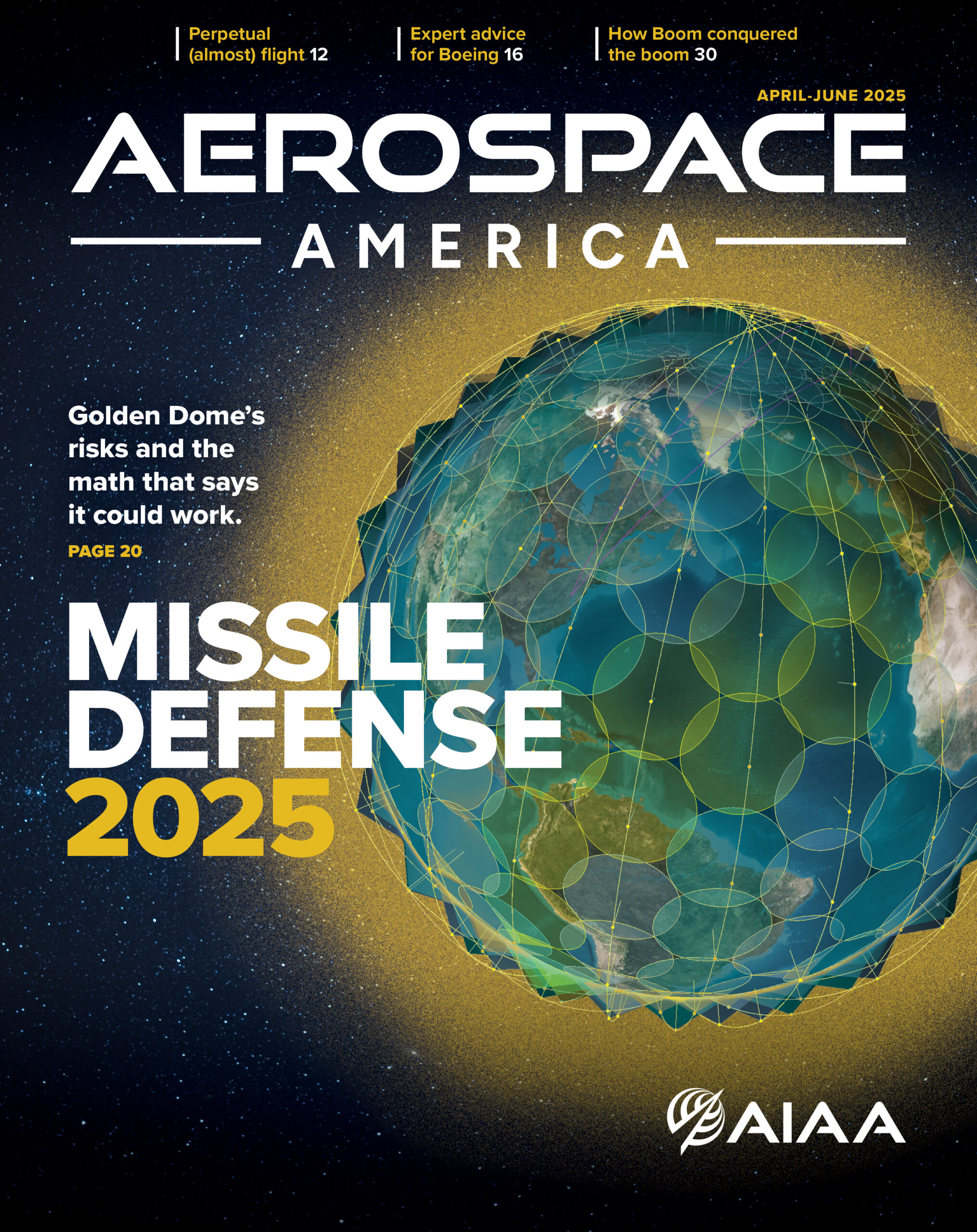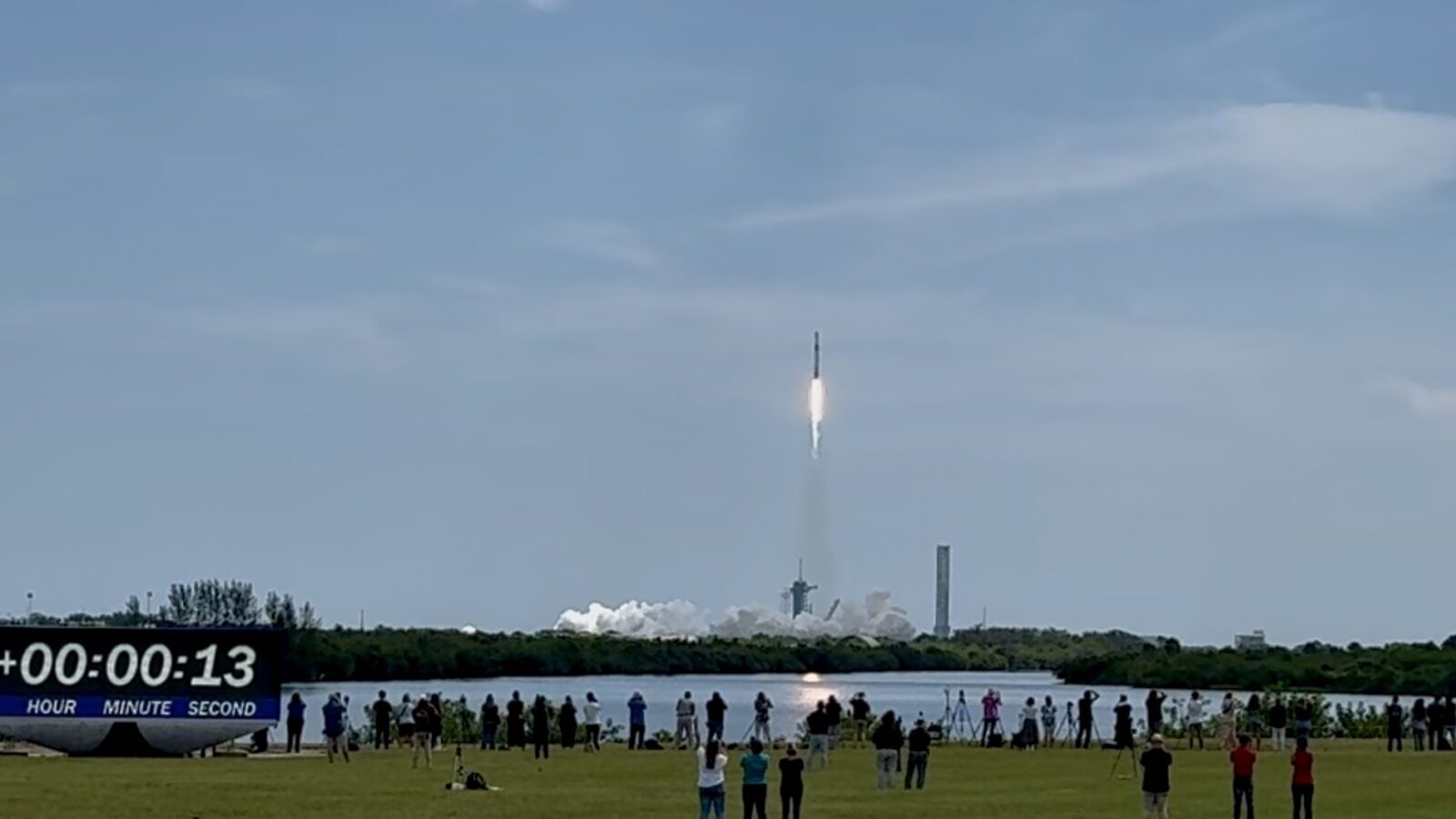Stay Up to Date
Submit your email address to receive the latest industry and Aerospace America news.
Crew-11 liftoff as viewed from outside the press site at NASA’s Kennedy Space Center. Credit: Paul Brinkmann
KENNEDY SPACE CENTER, Florida — A SpaceX Falcon 9 rocket lifted off from Launch Complex 39A here into a hot, hazy summer sky at 11:43 A.M. Eastern after storm clouds near the pad postponed the initial launch attempt on Thursday.
Aboard the Crew Dragon capsule were NASA astronauts commander Zena Cardman and pilot Mike Fincke, and mission specialists Kimiya Yui of Japan and Oleg Platonov of Russia.
Cardman shortly before the launch thanked her family and friends for their support along with SpaceX, NASA and the space agencies of Japan and Russia, JAXA and Roscosmos. She expressed gratitude “for this freedom to explore and resilience to endure.”
The rocket and capsule rumbled into orbit successfully and streaked through the sky over the Atlantic Ocean on its way to dock to the space station. Crew-11 is to arrive at 3 a.m. Eastern on Saturday, Aug. 2, for a six-month stay, though NASA is assessing whether to extend that to eight months.
Launched! #SpaceX #Crew11 pic.twitter.com/iVAN46mytX
— Paul Brinkmann (@PaulBrinkmann) August 1, 2025
About eight minutes after liftoff, the Falcon 9 first stage touched down at a landing zone about 14.5 kilometers away from the launch pad, sending a sonic boom across the wetlands of NASA Kennedy and the adjacent Cape Canaveral Space Force Station.
Cardman was originally to visit ISS as part of Crew-9, which launched to the ISS in September, but she and astronaut Stephanie Wilson were bumped from that flight to leave two seats open for astronauts Suni Williams and Butch Wilmore to return to Earth in March. Williams and Wilmore arrived at ISS in June 2024 aboard a Boeing Starliner, which experienced thruster issues and helium leaks while en route. NASA later determined Starliner should undock from station and return unoccupied, while the agency and Boeing continued testing and analysis of the anomalies.
While on station, the Crew-11 members are to participate in science and health investigations, including a study of how fluids shift in the body while in microgravity. NASA said some of the crew will wear thigh cuffs to keep bodily fluids from traveling headward. The potential goals of such studies include the treatment or prevention of eye and brain changes that can occur during long-duration space travel.
The crew will also “participate in a series of simulated Moon landings, before, during and after their flight” so NASA can “evaluate how different gravitational forces may disorient astronauts and affect their ability to pilot a spacecraft like a lunar lander,” according to a press release.
About paul brinkmann
Paul covers advanced air mobility, space launches and more for our website and the quarterly magazine. Paul joined us in 2022 and is based near Kennedy Space Center in Florida. He previously covered aerospace for United Press International and the Orlando Sentinel.
Related Posts
Stay Up to Date
Submit your email address to receive the latest industry and Aerospace America news.




